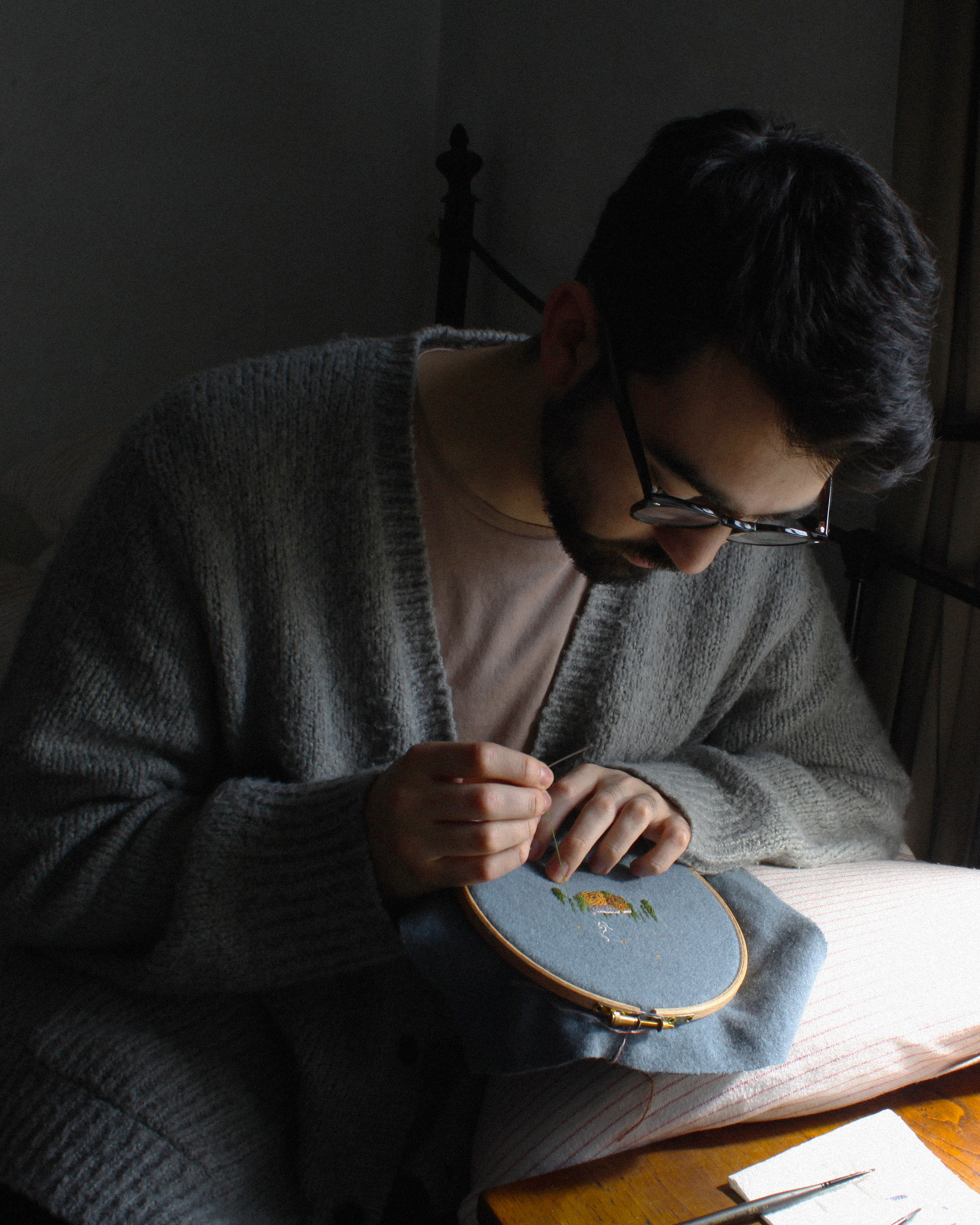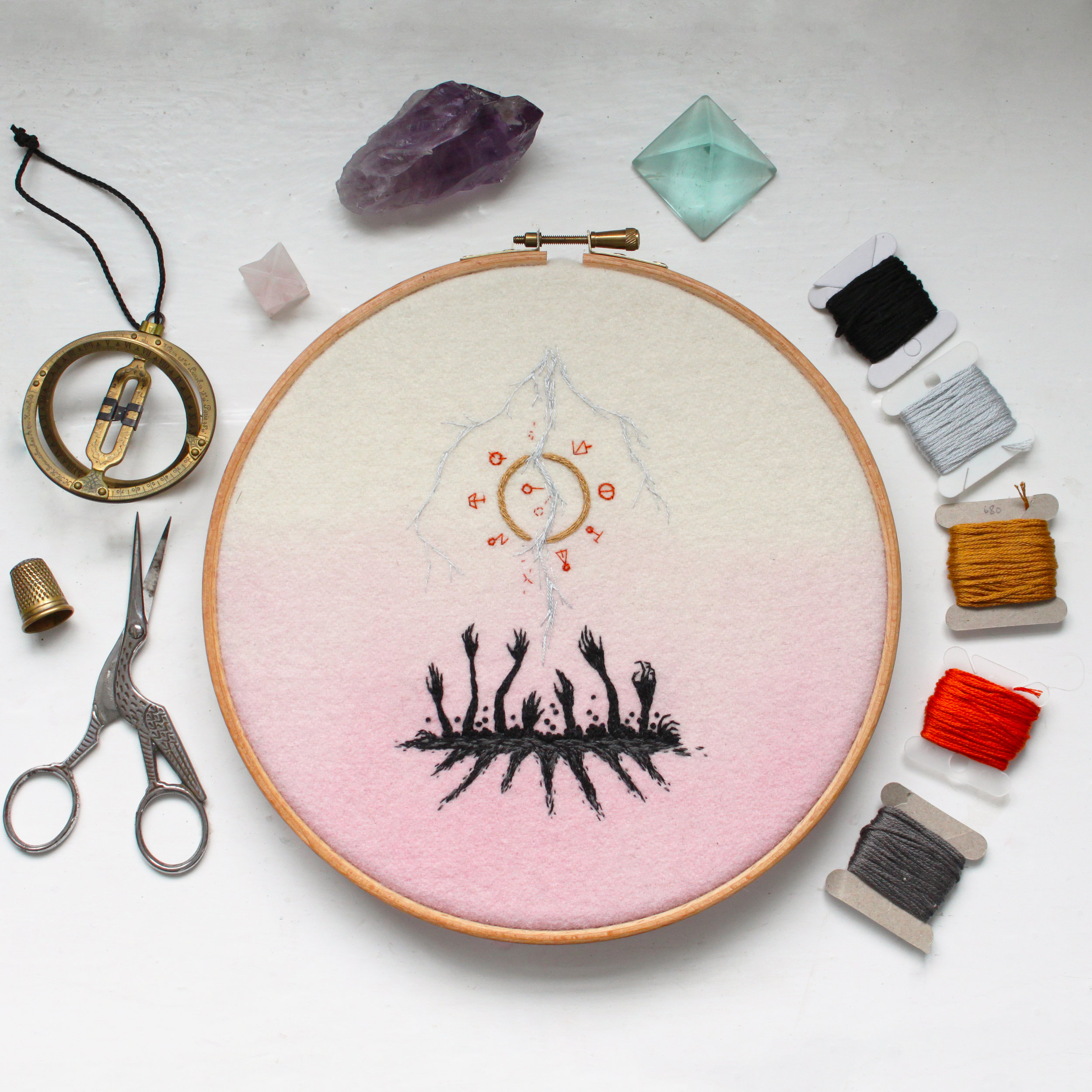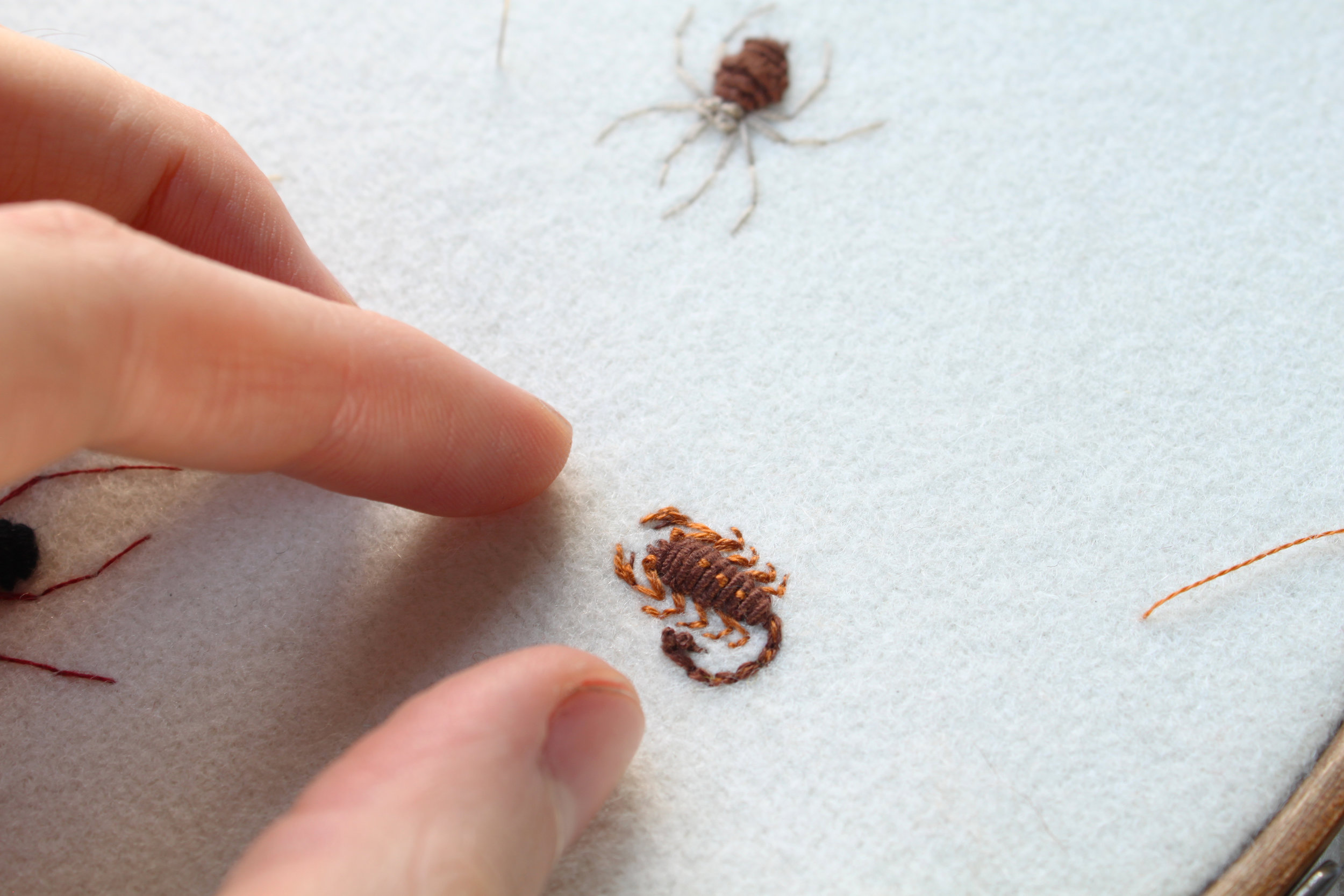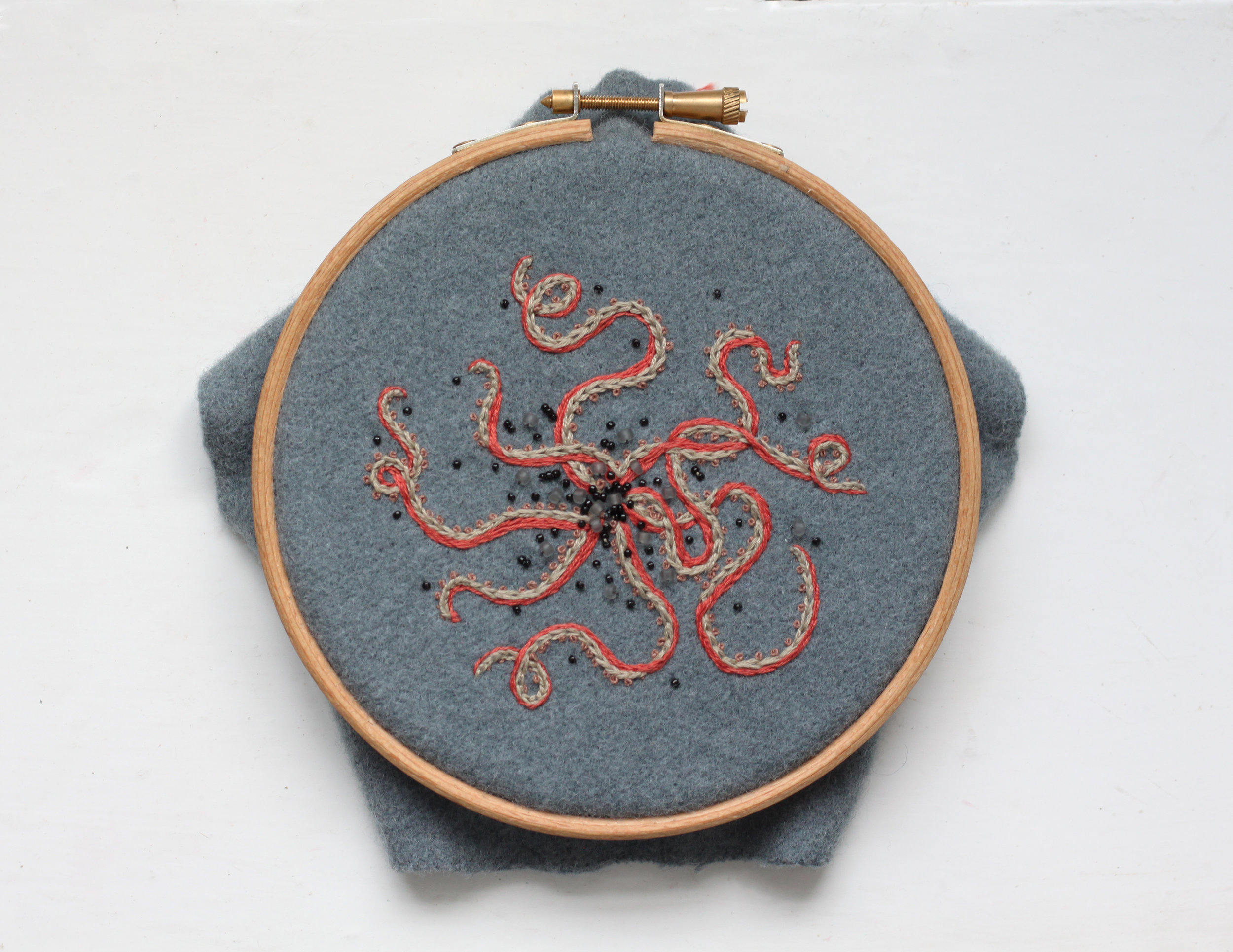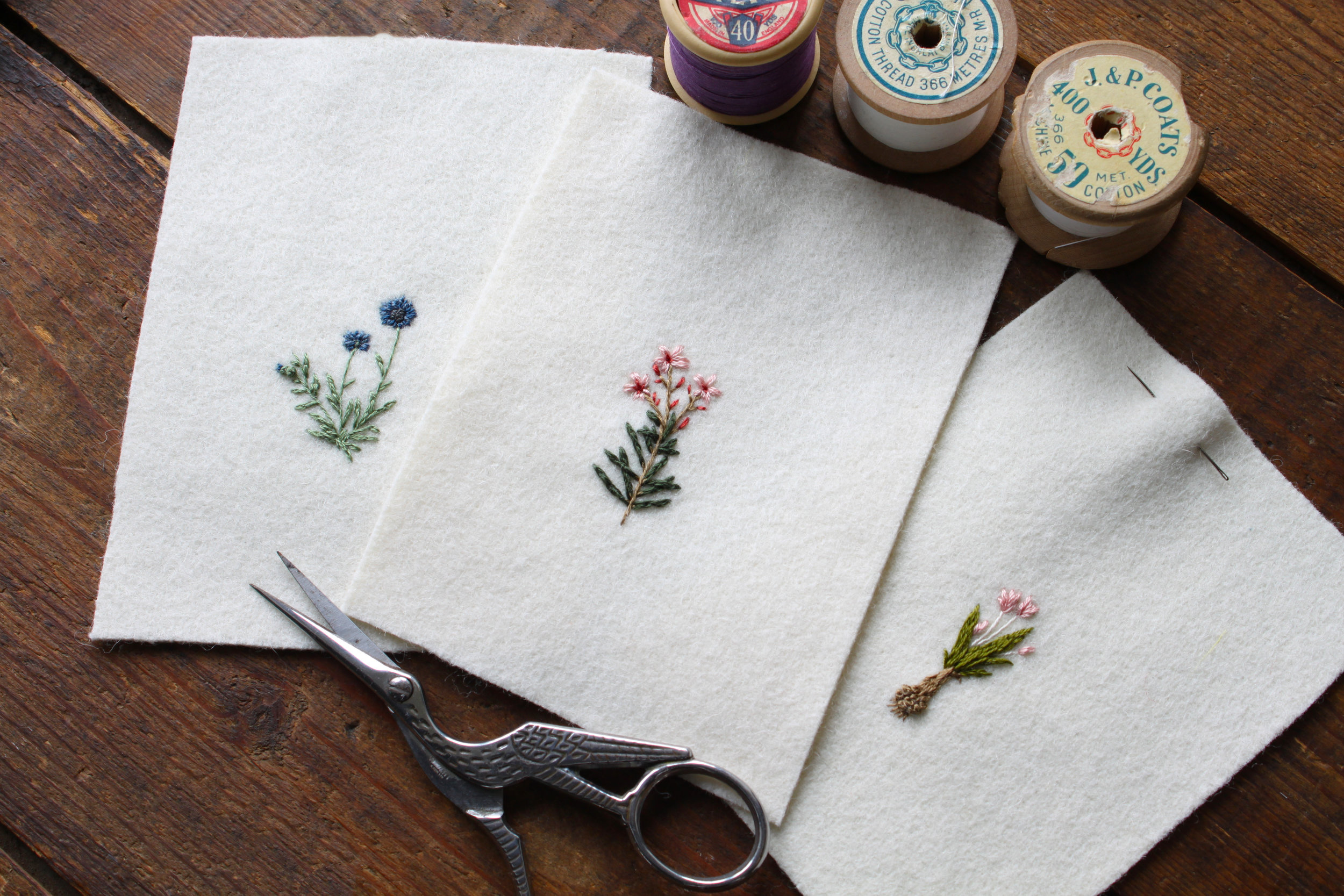Craft with Conscience: Adam Pritchett
Adam Pritchett // Embroidery Artist // The Lake District, England
Adam Pritchett is a hand embroidery artist based in the Lake District, England—his work is focused around mystical, botanical, and entomological themes, mixing traditional hand embroidery techniques with contemporary subjects, and hand dyed textiles.
Check out more of his amazing work on his website, Instagram, or on Twitter.
1. I began my #CraftWithConscience series as a way to simultaneously promote the work of other makers and to discuss the complicated issues surrounding creative inspiration and developing one’s own visual vocabulary. The internet is an ever growing fixture in many artists’ lives and businesses, could you talk about the role the internet plays in your artistic and professional life?
It is a very complicated subject. Personally, I still have a full time day job out of necessity as my art doesn’t support me enough to be freelance (as I would love to be), so I do all of my art in my spare time & at weekends. The internet is a crucial tool for me as an artist, giving me the freedom to work and promote my art whenever I have time to and that flexibility has no comparison with what it would have been like 20 years ago. Without it I don’t think I would have even been able to have taught myself embroidery to begin with, I have lots of old books on stitching but most of the knowledge I gained from them didn’t really click until I watched human hands making on Youtube.
Not to mention the huge amount of support & exchange that I gain from interacting with and being supported by folks online, my art honestly would not be the same without the internet.
2. Where do you find inspiration for your work? In what ways has the internet and/or social media impacted your design process?
I am a big book worm, I love reading fantasy/horror/sci-fi books and a huge amount of my consumption of literature and film feeds in to my embroidery work, very obviously to many people, I’m sure! Fortunately enough for me, I live on the edge of the Lake District National Park, so I am constantly inspired by the landscapes and nature around me, much of my botanical/insect themes definitely come from that place.
The internet plays a big part of that too, all the resources and information that is so easily at your disposal just makes the opportunity for finding new ideas so instantaneous. From following lots of illustrators and artists online, you get a glimpse in to other creative peoples process too, which I think has vastly improved my method and growth.
I think about composition & colour palettes now before starting a piece, where I always used to be very impulsive and unplanned. It’s helped me to grow far faster than I would have ever been able to on my own.
3. How have you, as an artist, found your creative voice?
This was something that I struggled with really profoundly when I began embroidery. I would often find myself toiling with an idea for a new piece after hours of research and still be sat staring at a blank piece of fabric, or you’d have an idea, but no direction to implement it. I studied fine art at university, so finding creative inspiration has been part of my life for a number of years now, and honestly, it never gets any easier, particularly in terms of finding your niche in a wider art community.
In my experience, the best way to find your own unique voice is to first know what interests you; write lists, read books, do research in areas that excite you just to discover new things. When you have begun to develop your own visual catalog of themes, images, subjects, that compose who you are as an individual, those are all at your disposal to translate in to new artwork. Work created by you, inspired by your point of view is going to carry your voice & personality far better, and more naturally than forcing yourself to make work that fits with an idea of what your style should be.
4. Sites like Pinterest and Instagram are popular places for artists’ to share their own work. They also act as public visual archives, often leading to creative work by others that walks the line between ‘inspiration’ and ‘infringement.’ Have you encountered copies of your work online and how does it affect you? What are your strategies for dealing with it?
Mmm, this is another very common experience I have found as an embroidery artist, and particularly as one that does everything freehand and does not design or sell patterns. The crafts community is wonderful and has an incredible exchange of knowledge and skills that I think is so encouraging to everyone from beginner to experienced, but the the drawback can sometimes be people thinking that it’s acceptable to directly copy an artists work. I am often asked for tutorials on how to recreate my spider pieces step-by-step (pretty much every time I post one), and generally I don’t reply. I’m always happy to answer technical questions about stitches, and I’ve taught classes before on how to do traditional embroidery stitches, but I don’t want to ever give tutorials on how to copy my work that has taken a number of years for me to develop in my own way. I’d always encourage folks to learn technical skills, and to develop your own voice to apply those skills in your own way.
I have had some very negative experiences with other people directly stealing my photographs and videos, removing watermarks and posting them on their own instagram accounts without crediting me. That is never okay, and I always respond swiftly having them taken down by instagram — their copyright infringement form is really good at having things like that taken down. But there is still an account on Youtube that is hosting my videos on their channel & profiting from the advertising and Youtube have refused to take them down because I haven’t ‘proven’ that they’re mine, which is incredibly frustrating. There are certainly big drawbacks to sharing your work online!
5. Do you have any advice for aspiring artists or creative business people?
Speaking from my own experiences, as I mentioned earlier, finding your voice is a really important step to making original, interesting artwork that people engage with, and I think it’s probably a key point.
Another really important aspect that I think gets often overlooked, and I certainly didn’t take more seriously until recently. Photographing your work, well. The number of people I see that have spent hours making a beautiful piece of art, and just take a terrible picture on their phone, under artificial light, from a bad angle. You’re not doing yourself any justice. That’s not to say you need an expensive camera, because you really don’t. Take your time to set up shots from multiple angles to see which works best at the end, use little props to make your pictures more visually appealing. And where you can, try to always take pictures in natural light, they ALWAYS look so much better than under a lamp, or with a flash on.
Finally, I all too often see, particularly textiles artists, undersell their work. It’s such a shame to see people sell themselves short not charging enough for their time & skill. The nature of what we do is a slow artform, and you should always be charging AT LEAST minimum wage for your time, period. Your skills are valuable, and they should not be given for free.
6. Do you have any favorite blogs, artists, or Instagram accounts that you’d like to share?
Yes! I’m a huge fan of the creative community that is fostered by Instagram and the online world, promoting the work of other artists is something I love to do so here are just some folks who make incredible art!
My partner is an illustrator @fawnlorn, we share a studio in our flat — and some other artists to check out are; @royalghostmarch, @ohnonatalie, @rbessaaa, @vonnart
Some of my favourite embroiderers are; @marnalunt, @sally_hewett, @moonflesh, @nocturnalstudios, @eira_teufel, @mother_eagle_embroidery
I could go on and on listing countless more!
All images provided by the artist.

